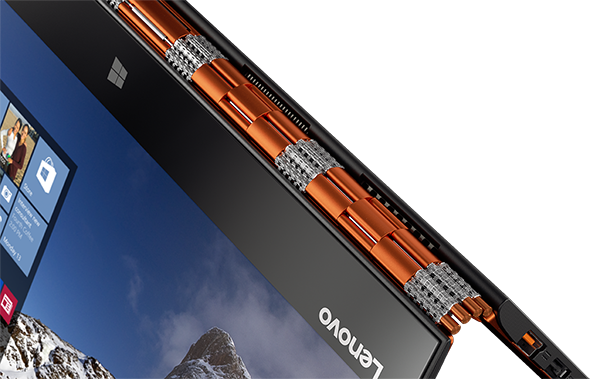Early this week, Lenovo has announced its brand new Yoga 900 2-in-1 convertible laptop. The new devices features
REACHit technology, an enhancement to Cortana which was announced in May this year, enabling users to use voice commands to search files across multiple cloud services, besides OneDrive, including Google Drive, DropBox, Exchange, Gmail and Baidu, to name a few.
The Lenovo Yoga 900 is a Windows 10 laptop that features specs that are very close to Microsoft Surface Book. As a matter of fact, it seems that Lenovo went through great lengths to create a “missing-link” between the low-end, and the top-end Surface Book, by mixing specs that bridge the two devices, sans detachable screen-to-tablet option.

Just like the top-end Surface Book, the Yoga 900 is powered by an 6th gen (Skylake) Intel Core i7 processor. With that in mind, the Yoga 900 graphic options are driven by an Integrated Intel HD Graphics chip, just like the one found in the detachable tablet option of the top-end Surface Book, or the entry level Surface Book, if you will.
The display on the Yoga 900 is slightly smaller than the Surface Book, as 13.3 inches, and it supports resolutions up to 3200 by 1800 pixels. While the Surface Book’s resolution is lower, with a 267 pixel density, the aspect ratio of the Yoga 900’s 300 pixel density is spread over a wide QHD+ display, which provides less real estate for productivity applications.
Memory options extend up to a maximum of 16GB LP-DDR3L, while storage support extends up to 512GB, which is half of the maximum capacity for the Surface Book.
Networking hardware on the Yoga 900 falls a little shorter than the Surface Book. While the Yoga 900 integrates 2x2 802.11a/c Wi-Fi, Microsoft’s flagship laptop includes a 802.11a/b/g/n chip.
The sound system features JBL Stereo Speakers with Dolby DS 1.0, with Home Theater Certification.
Video recording capabilities on the Yoga 900 are also restricted to 1MP 720p HD CMOS Camera, while the Surface Book packs a 5.0MP front facing camera, and an 8.0MP 1080p HD rear facing camera, with dual microphones active on both cameras. With that said, the Yoga offers a wider range of connectivity options, including a USB Type-C connector, which the Surface Book does not have.
Final thoughts
While the Lenovo Yoga 900 is a respectable product, with a range of unique features exclusive to Lenovo, such as REACHit, and SHAREit, there are a few aspects that make this laptop a product geared towards home or school use, more than for professional applications, at least compared to the Surface Book.
The aspect ration, for instance, is designed to offer a better movie viewing experience, but it falls short in providing sufficient vertical real estate for productivity applications, which is very much a point of strength in the Surface Book.
The detachable screen is another aspect that makes us lean a bit more in favor of the Surface Book, at least in productivity apps. While the Yoga 900 features the ability to work in tablet mode by folding the screen 360 degrees, the overall weight of the device makes this laptop twice as heavy to hold as the Surface Book’s detachable display.
Finally, with the Yoga900 storage options limited to the standard available of 512GB, the Surface Book’s 1TB SSD is still on top of its competitors, and one of the very few to provide this level of SSD storage.